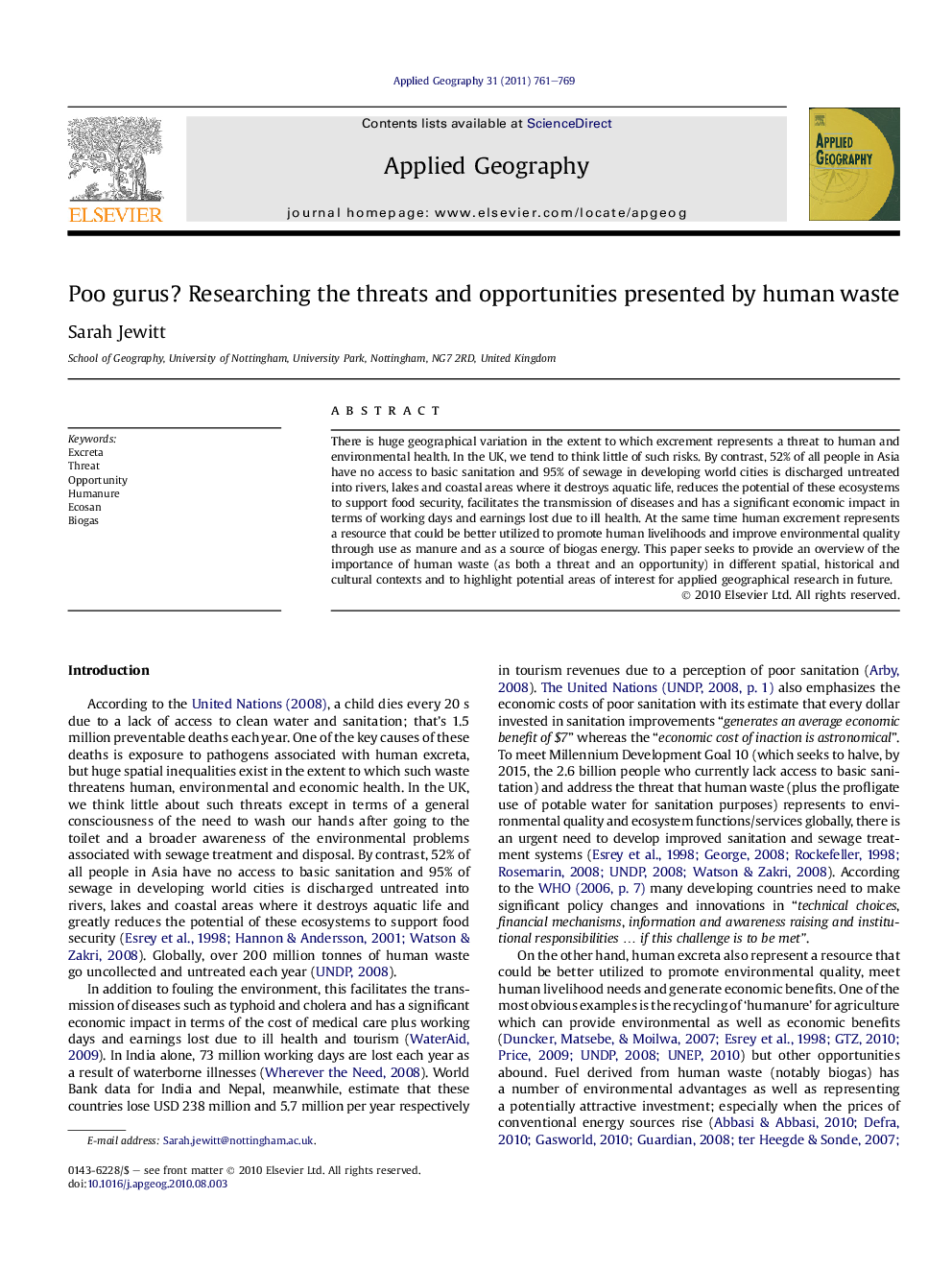| Article ID | Journal | Published Year | Pages | File Type |
|---|---|---|---|---|
| 83785 | Applied Geography | 2011 | 9 Pages |
There is huge geographical variation in the extent to which excrement represents a threat to human and environmental health. In the UK, we tend to think little of such risks. By contrast, 52% of all people in Asia have no access to basic sanitation and 95% of sewage in developing world cities is discharged untreated into rivers, lakes and coastal areas where it destroys aquatic life, reduces the potential of these ecosystems to support food security, facilitates the transmission of diseases and has a significant economic impact in terms of working days and earnings lost due to ill health. At the same time human excrement represents a resource that could be better utilized to promote human livelihoods and improve environmental quality through use as manure and as a source of biogas energy. This paper seeks to provide an overview of the importance of human waste (as both a threat and an opportunity) in different spatial, historical and cultural contexts and to highlight potential areas of interest for applied geographical research in future.
Research highlights► The extent to which excreta threaten human and environmental health varies spatially. ► Applied geographical research on this topic is currently quite limited. ► Human waste could be better used to promote livelihoods and environmental quality. ► Geographers can enhance understandings of locally appropriate excreta use/management. ► This would help to respond to calls for ‘relevant’ research and ‘impact’.
